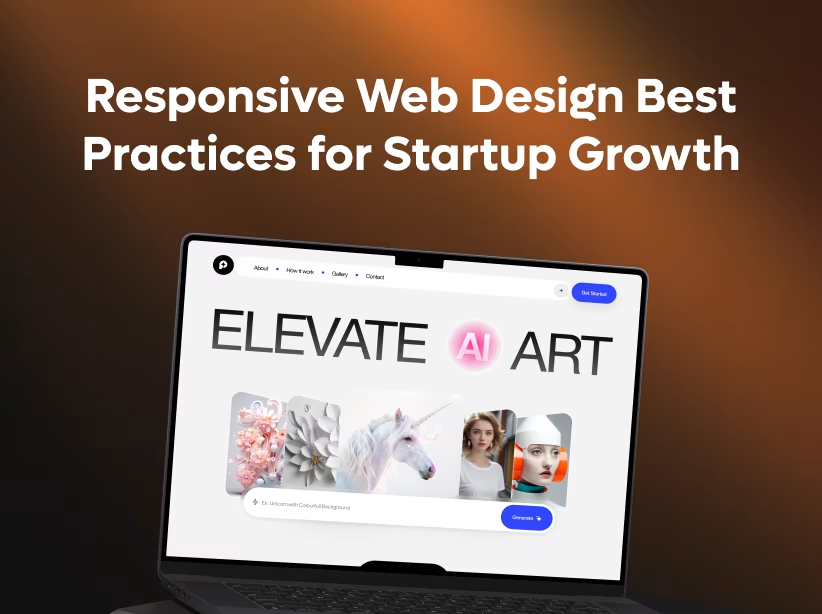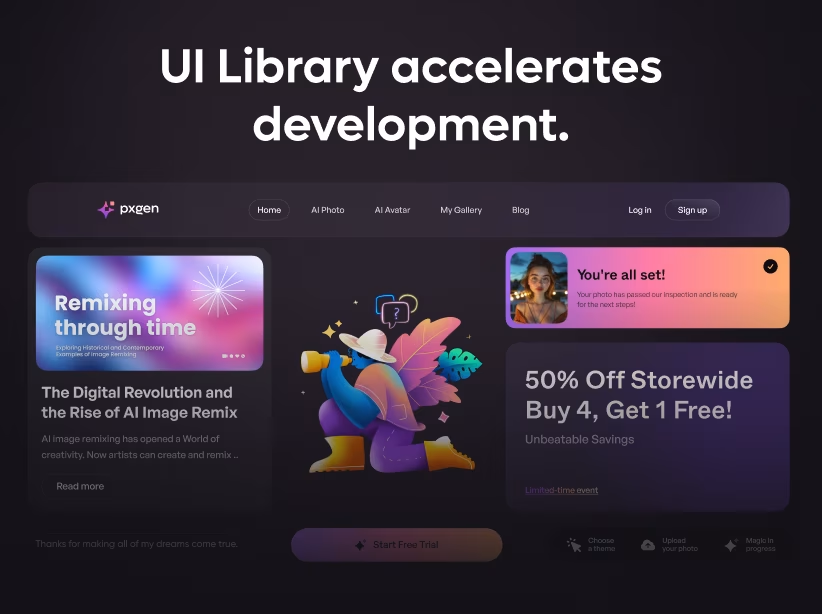
1. Why Responsive Design Matters for Startups
Startups often operate under constraints—limited time, budget, and manpower. Responsive web design (RWD) is the smartest investment because it adapts seamlessly to all devices—mobile, tablet, desktop, or even smart TVs—without needing multiple versions of your site.
Key benefits:
- Better SEO: Google prioritizes mobile-friendly and responsive websites.
- Lower Maintenance Cost: One design that works across all platforms means fewer resources spent on updates.
- Improved User Experience: A consistent experience boosts trust and engagement.
- Higher Conversions: Visitors are more likely to stay and act when your design feels intuitive and smooth.
2. Mobile-First Is the New Default
Mobile-first design isn't just a trend—it's the foundation of modern UX. Startups should design for the smallest screen first, ensuring key features, buttons, and content are accessible on mobile.
Tips to implement mobile-first thinking:
- Prioritize essential content and CTAs at the top of the page.
- Keep navigation simple and collapsible (e.g., hamburger menus).
- Optimize touch targets (buttons, icons) for thumbs, not cursors.
- Use fast-loading media and compress images for performance.
Pro tip: Test your site on multiple devices—both high-end and budget phones—to ensure accessibility across audiences.
3. Speed and Performance Optimization
Fast websites convert better. According to Google research, a 1-second delay in load time can reduce conversions by $20\%$. For startups, where every lead matters, this is critical.
Best practices for better performance:
- Use a content delivery network (CDN) for faster load times globally.
- Compress and lazy-load images.
- Minify CSS, JS, and HTML.
- Implement caching strategies for repeat visitors.
- Optimize hosting—choose cloud platforms like Vercel, Netlify, or Cloudflare Pages.
Remember: performance isn't just technical—it's a UX signal that builds credibility.
4. Prioritize Visual Hierarchy and Content Flow
Your startup's website must guide users from curiosity to conversion naturally. This means crafting a visual hierarchy where attention flows effortlessly toward CTAs.
How to do it:
- Use contrasting colors for call-to-action buttons.
- Maintain ample white space for readability.
- Design with F-pattern or Z-pattern layouts—the natural way users scan pages.
- Keep content scannable with short paragraphs, bullet points, and headings.
Great design doesn't overwhelm—it invites exploration.
5. Responsive Typography and Readability
Typography defines how your brand “feels.” In responsive design, it must also remain legible across all screens.
Checklist:
- Use relative units (em/rem) instead of fixed pixels.
- Set a minimum font size for mobile readability (16px+).
- Maintain high contrast between text and background.
- Use web-safe fonts that render consistently.
Readable typography improves both user satisfaction and SEO dwell time.
6. Accessibility and Inclusivity
An often-overlooked aspect of startup design is accessibility. Building accessible websites isn't just ethical—it's a growth advantage. Inclusive design opens your startup to wider audiences and builds long-term trust.
Implement these standards:
- Use alt text for all images.
- Ensure keyboard navigability for all interactions.
- Maintain color contrast ratios per WCAG guidelines.
- Add ARIA labels for assistive technologies.
Accessibility reflects empathy—and empathy drives conversions.
7. Conversion-Driven Responsive Design
Startups need websites that don't just look good but drive measurable results. Every design decision—from button placement to form structure—should support the conversion journey.
Conversion optimization tactics:
- Place CTAs above the fold and at key decision points.
- Use sticky headers for quick navigation.
- Showcase social proof—client logos, testimonials, and reviews.
- Add prominent signups for lead capture.
8. Testing, Analytics, and Continuous Improvement
A responsive website is never “done.” For growth-stage startups, ongoing A/B testing and analytics are critical to learning what resonates with users.
Use tools like:
- Google Analytics 4 or Hotjar for behavioral insights.
- Google Lighthouse for performance and accessibility scoring.
- A/B testing tools (Optimizely, VWO) to refine design elements.
Responsive web design is iterative—the more you learn from data, the faster you grow.
9. The Future: Adaptive and AI-Powered Responsiveness
Looking ahead, responsive design is evolving into adaptive and AI-driven UX. These systems dynamically adjust layouts based on context—device, connection speed, even user behavior.
Imagine a startup website that adapts in real-time to display the most relevant content for each visitor segment. This is where the web is heading—and forward-thinking startups are already investing in it.
Conclusion: Design Responsively, Grow Exponentially
For startups, responsive web design is not a luxury—it's a growth multiplier. It aligns your brand with user expectations, enhances visibility on search engines, and delivers a friction-less experience across every device.
If your startup's goal is to scale globally, start by scaling your design thinking. A responsive foundation ensures every visitor—no matter where or how they arrive—gets the same high-quality experience that converts curiosity into action.
Fresh UI/UX Ideas, Straight to Your Inbox





